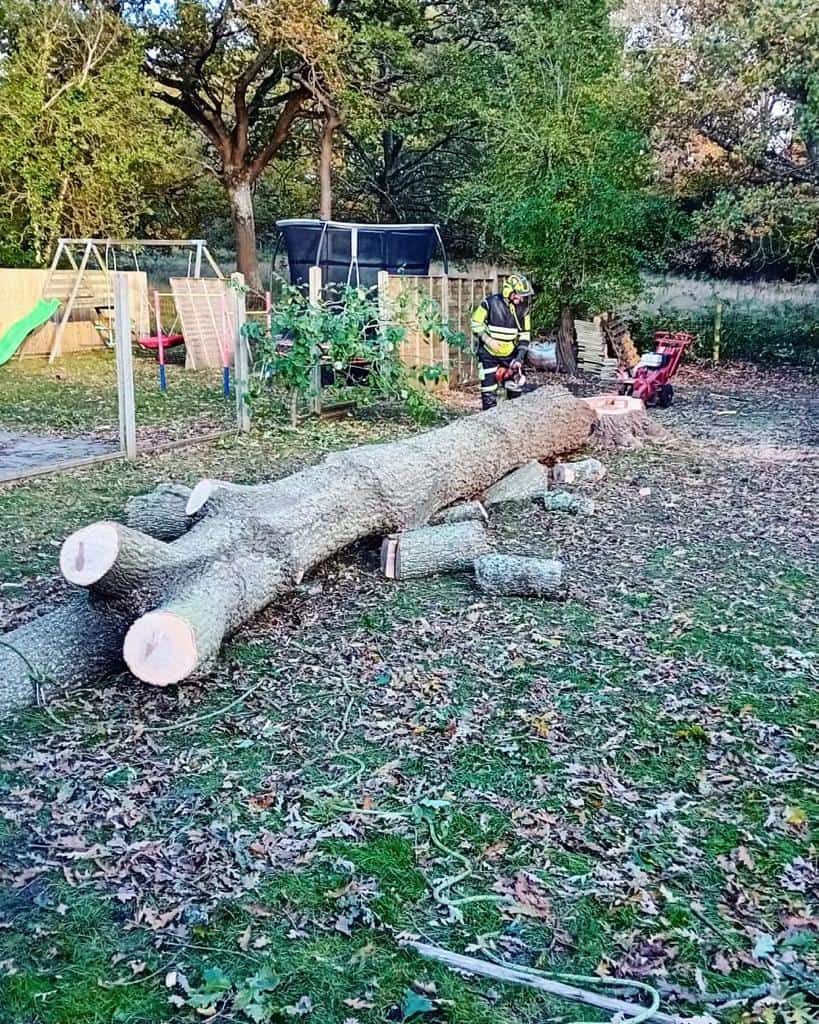Overgrown and neglected hedges can make even the most beautiful garden look unkempt and tired. However, with the right techniques and a careful approach, even the most unruly hedge can be revitalised into a healthy, attractive boundary once again. Proper cutting is key to restoring density, shape, and vigour.
At LM Tree Surgery Hedge End, we specialise in hedge rejuvenation and maintenance across Hedge End, Hampshire. In this article, we explain how professional hedge cutting can bring old hedges back to life, improving both the appearance and health of your outdoor space.
Why Old Hedges Become Neglected
Over time, hedges can suffer from:
- Lack of regular trimming, causing them to become leggy and sparse
- Uneven growth due to light deprivation or overcrowding
- Damage from pests, disease, or harsh weather
- Poor original planting or soil conditions
Without timely intervention, the hedge loses density, its base becomes bare, and the structure weakens.
The Importance of Correct Hedge Cutting
Reviving a hedge requires more than simply trimming it back aggressively. Correct cutting techniques are essential to:
- Stimulate new, healthy growth from dormant buds
- Restore a balanced, attractive shape
- Minimise shock and long-term damage to the plant
- Encourage a thicker, fuller hedge from base to top
At LM Tree Surgery Hedge End, we assess each hedge carefully to determine the most appropriate method for successful rejuvenation.
Steps to Revive Neglected Hedges
1. Assess the Hedge Condition
Before cutting begins, it’s important to evaluate:
- The overall health of the hedge
- The extent of dieback or disease
- Whether a hard cutback or staged rejuvenation is appropriate
Not all hedges respond equally to drastic pruning, so understanding the species is crucial.
2. Plan a Staged Renovation (If Needed)
For very old or sensitive hedges, a staged approach is often best.
- Cut back one side in the first year
- Cut back the other side in the second year
- Top reduction may follow once side growth recovers
This reduces stress on the plant and helps maintain some visual coverage during the regeneration process.
3. Hard Pruning Techniques
Some hedge species, like beech, yew, and hornbeam, can tolerate hard pruning back to old wood.
- Remove dead or severely damaged branches
- Encourage new shoots from lower down
- Create a tapered shape, wider at the base, to maximise light exposure
Not all species respond well to severe cuts, so professional knowledge is important to avoid irreversible damage.
4. Promote Regrowth with Correct Aftercare
Reviving a hedge doesn’t end with cutting. Post-pruning care is essential:
- Mulch and feed the base with organic compost or slow-release fertiliser
- Water regularly during dry spells
- Protect from pests such as rabbits or deer, which may nibble new shoots
Strong aftercare ensures the hedge has the resources it needs to rebuild density and vigour.
5. Implement Regular Maintenance Trimming
Once the hedge begins to recover:
- Light, regular trimming encourages bushier growth
- Maintain the correct profile to prevent top-heavy shading
- Remove any damaged, diseased, or crossing branches promptly
Routine maintenance prevents the hedge from falling back into neglect and maintains its form and health long term.
Best Time to Rejuvenate a Hedge
Timing is important when undertaking heavy cuts:
- Late winter or early spring is ideal for most deciduous hedges
- Early spring is best for evergreens
- Avoid cutting during the bird nesting season (typically March to August)
- Some sensitive species benefit from minor trimming during the growing season to promote recovery
At LM Tree Surgery Hedge End, we plan hedge rejuvenation work carefully to protect wildlife and achieve the best results.
Conclusion
Even severely neglected hedges can often be revitalised with the correct approach to cutting and care. Professional hedge rejuvenation improves the appearance, health, and lifespan of your hedge, enhancing the beauty and privacy of your garden.
If you have an overgrown hedge in Hedge End, Hampshire that needs expert attention, contact LM Tree Surgery Hedge End. Our experienced team will assess your hedge, recommend the best course of action, and carry out precise cutting to bring your garden boundaries back to their best.
Call us on: 01489 359 998
Click here to find out more about LM Tree Surgery Hedge End
Click here to complete our contact form and see how we can help with your tree needs.

